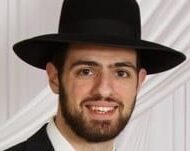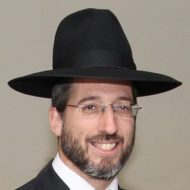
Have you ever seen an iceberg up close? Take a look at the picture on this page. Quite startling. The photograph came from a rig manager for Global Marine Drilling in St. John, Newfoundland. They have to divert the path of the iceberg away from the rig by towing it with ships. The estimated weight: 300,000,000 tons! So I was told, until I did some research. In reality, this image was produced in 1999 by Ralph A. Clevenger, a professional nature and underwater photographer. As Mr. Clevenger explained, this image is
not a single photograph but a composite of four different photographs (not all taken in the same place): “The iceberg image is a digital composite that I designed to illustrate the concept of “what you see is not necessarily what you get”. As an underwater photographer I knew that my “vision” of what a big iceberg looks like was impossible to get in reality so I had to create it. The image exists in nature but due to water visibility is not possible to capture on film.”
There are 4 separate images involved; the sky, the background, the top iceberg (shot in Antarctica), and the underwater iceberg (shot above water in Alaska and flipped in the final composite).
When one approaches the reading of the Torah one should do so with this idea in mind. Our view is only the tip of the iceberg, beneath lies much more. We spend a lifetime studying G-d’s unique blessing to mankind. There are many facets to the Torah. It’s up to us to learn, put the images together and reveal the deeper beauty.
Upon leaving the ark after the Mabul (deluge) Noach planted a vineyard. The vineyard produced grapes and Noach made wine which he drank and became “intoxicated”. Alone in his tent, Noach disrobed and fell into a deep sleep. While asleep and uncovered, Canaan the son of Cham, and Noach’s grandson, entered his grandfather’s private residence, and upon seeing his grandfather’s less than dignified condition informed his father. Chamentered his father’s tent, degraded and assaulted his father’s dignity and then told his two brothers (Shem and Yefet) who undertook to care for their father without further compromising his dignity. After these events the Torah proceeds to list Noach’s descendants. Noach’s son Cham had a son called Kush. The Torah then lists five children of Kush followed by what would seem on the surface a simple introduction to Kush’s sixth son, Nimrod;
Our Sages asks two fascinating questions on these Pesukim which really open our understanding to what lies beneath the surface. Firstly, why did the Torah separate Nimrod from the other brothers? He should have been mentioned together with them in Pasuk 7. Secondly, Nimrod was an evil person. Why is he given the titles of “a mighty man” and “a mighty hunter before G-d”? Why mention G-d’s name, surely Nimrod represented the exact opposite?
The Zera Barech brings the great debate that ravaged between Avraham and Nimrod. (Tana Dvei Eliyahu (Perek 25)) Nimrod was seen as a god. The people revered him and no one ever dared challenge his word. Until Avraham came on the scene. Nimrod was furious at Avraham and said, “Do you not know that I am the master of all: the sun, moon, stars, Mazalot. People are nothing to me. Why do you try and destroy my gods? Avraham wisely answered Nimrod in several ways, challenging Nimrod to prove that he has the power to be master over the constellations; daring him to make the sun rise in the west and settle in the east. Avraham ended with a knockout blow. “Don’t be astonished, you are not master of the world. Rather you are merely son of Kush. If you were the master of the world, how come you never saved your father from dying? Nimrod was beaten. The Zera Barech explains that this is the reason why the Pasuk goes out of its way to stress that Kush begot Nimrod. He was no real god. He was but a mortal the son of Kush.
The Ben Ish Chai (Od Yosef Chai) explains that this is also the reason that Nimrod is called “a mighty man in the land”. He was after all mighty, but the Torah is stressing that his might was only
in the . He was physically strong, but in reality had no powers over the constellations. Once Avraham had challenged him and the word spread, people realised he was no god, rather he was human like them. It is then that whenever they met a person who pretended to be a god they said, “Like Nimrod, a mighty hunter .” They would challenge fake gods, with the slander of trying to copy Nimrod. As if to say we all know that Nimrod was a scam, a hunter who tried to trap people into thinking he was a god, and you are just like him. Avraham was able to turn a situation with a false god like Nimrod, into a real saying that included delegitimising Nimrod whilst at the same time through comparing to the real G-d, sanctifying G-d’s name.
We have now delved beneath the surface of what seem to be simple Pesukim. The Torah is laden with gems beneath the surface. Deep down lies the story of Avraham and Nimrod, the realisation in the world that Nimrod was a scam and that in fact the Torah is not complimenting Nimrod but rather chastising him for he became known to be the first revealed conman. The more we learn the more we realise how much we don’t know!







